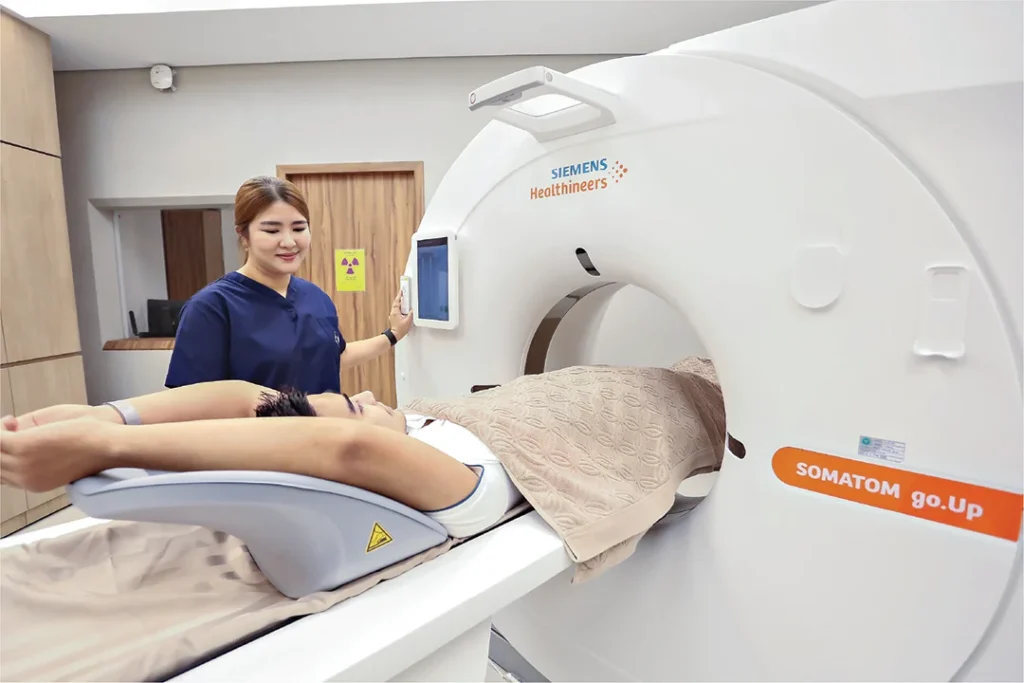
Pulmonary Embolism (PE): Causes, Symptoms & Treatment at WIH International Hospital
Pulmonary embolism (PE) is a serious condition where a blood clot travels to the lungs, blocking blood flow. At WIH International Hospital, we provide expert diagnosis, management, and treatment for PE to ensure the best outcomes for our patients.
What is Pulmonary Embolism (PE)?
A pulmonary embolism occurs when a blood clot (thrombus) forms elsewhere in the body, usually in the deep veins of the legs (deep vein thrombosis, DVT), and travels to block the arteries in the lungs. This can reduce oxygen levels, damage lung tissue, and be life-threatening if not treated promptly.
Types of Pulmonary Embolism
Massive PE: A severe obstruction that leads to shock or low blood pressure.
Submassive PE: A clot that causes heart strain but without low blood pressure.
Low-risk PE: Smaller clots with mild or no symptoms.
How Often Does PE Occur Without Leg DVT Signs?
It’s actually quite common for PE to occur without visible signs of DVT in the legs. Studies show that 30% to 50% of patients with confirmed PE do not have any clinical signs like swelling, redness, or pain in the legs. Even with imaging, around 20% to 30% of PE patients have no detectable DVT.
Mechanisms: Why PE Can Occur Without Leg DVT Signs
There are three main reasons why PE can happen without leg DVT signs:
- Silent or Small DVT: The clots in the legs may be too small to cause symptoms but can still break off and travel to the lungs. Up to 50% of DVTs are clinically silent.
- Clots from Other Sites: Not all pulmonary emboli originate from the legs. Clots can form in other parts of the body, such as pelvic veins (after surgery), upper limb veins (due to catheters or pacemakers), or even the right side of the heart.
- Complete Embolization: The entire clot can dislodge from the leg vein and travel to the lungs. Since the original clot site is now empty, there is no longer any blockage in the leg veins to cause swelling or pain.
Signs & Symptoms of Pulmonary Embolism
Symptoms of a pulmonary embolism (PE) can vary widely, depending on the size of the clot, the extent of lung involvement, and a person’s overall health. According to the Mayo Clinic, the signs can range from common to less frequent.
Common symptoms include:
Sudden shortness of breath that worsens with exertion or even at rest.
Sharp chest pain that intensifies when you breathe deeply, cough, bend over, or lean forward. This pain may feel similar to a heart attack.
Less common symptoms may include:
Fainting or feeling lightheaded, which may be caused by a sudden drop in blood pressure.
A cough that might produce blood-streaked phlegm.
A rapid or irregular heartbeat, along with excessive sweating.
Fever, or swelling and pain in the leg, particularly in the calf.
Clammy or bluish-colored skin (cyanosis).
Prophylaxis (Prevention)
At WIH International Hospital, we prioritize prevention. Our strategies include:
- Early mobilization after surgery.
- Anticoagulant medications (blood thinners) for high-risk patients.
- Compression stockings or devices.
- Comprehensive risk assessment for all surgical patients.
WIH emergency care
At WIH International Hospital, our emergency care for Pulmonary Embolism (PE) is built on a patient-centric model that prioritizes your immediate well-being and long-term recovery. Upon arrival, our 24/7 Emergency Center team rapidly assesses your condition with advanced diagnostic tools, ensuring swift and accurate diagnosis. We understand the anxiety and fear that come with a life-threatening condition like PE, which is why our compassionate staff keeps you and your family informed and involved in every step of the treatment plan. From immediate anticoagulation and supportive care to more advanced interventions like thrombolysis, our goal is to not only stabilize your condition but also provide a reassuring and collaborative environment, making you an active partner in your healthcare journey.
Investigation and Diagnosis
If PE is suspected, our medical team uses a combination of advanced diagnostic tools to confirm the diagnosis, including:
- D-dimer test to check for blood clot breakdown products.
- CT Pulmonary Angiography (CTPA) with contrast media to clearly visualize the lung arteries.
- V/Q scan, a lung ventilation/perfusion scan.
- Doppler ultrasound of the legs to check for DVT.
Management and Treatment
At WIH International Hospital, we provide tailored treatment based on the patient’s condition. Our main treatments include:
Anticoagulants (blood thinners) to prevent the clot from growing and new clots from forming.
Thrombolytics (clot-dissolving drugs) for severe PE cases.
Oxygen therapy and other supportive care.
Treatment for PE at WIH International Hospital
Our multidisciplinary team is dedicated to providing personalized and expert care, including:
24/7 emergency response for immediate medical attention.
Advanced imaging for accurate and rapid diagnosis.
Minimally invasive clot removal when necessary.
Long-term follow-up with our hematology and cardiology specialists.
FAQ
Yes, it can. Around 30%–50% of patients with PE have no leg symptoms.
No, the underlying mechanism is the same, following Virchow’s triad (venous stasis, endothelial injury, and hypercoagulability). The difference lies only in where the clot forms and when it travels.
Yes. Prevention is key and includes measures like blood thinners for high-risk patients, early mobilization after surgery, and compression therapy.
Yes, if left untreated, PE can be fatal. However, with timely diagnosis and expert treatment at WIH International Hospital, outcomes are significantly improved.
We offer a range of treatments, including anticoagulation, thrombolysis, and advanced interventional procedures as needed.

